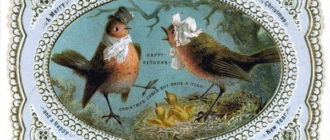
The Lion Hunt is a painting by Peter Paul Rubens, completing the cycle of hunting scenes he painted between 1610 and 1621. The author depicted the climax of an attack on two formidable African predators. In a dramatic battle against dangerous prey, seven armed men and four horses have united. The artist achieved the realism of the work by filling the entire space of the picture.
Characters on the right and left edges are partially visible, as if protruding from the frame. Dynamics permeates every centimeter: manes flutter, fabric falls in folds, hooves with shiny horseshoes are thrown up, the neck of one of the horses is painfully twisted: a clawed paw overtook it. The seeming chaos is strictly ordered, the action has a single center: a falling man and a lion ready to tear him to pieces. The gazes of the hunters and the points of their spears are directed here. The feeling of imminent death, which is about to overtake the formidable animals, is transmitted to the audience.
Author: Peter Paul Rubens (1577-1640).
Year of writing: 1621.
Dimensions: 248.7 x 377.3 cm.
Style: Baroque.
Genre: Animalistic. Historical.
Technique: Oil painting.
Material: Wood.
Location: Munich, Alte Pinakothek.
Painting by Peter Paul Rubens Lion Hunt – a special dynamic of ordered chaos
Peter Paul Rubens is a Flemish painter of the Baroque era, who left behind about three thousand paintings. The master specialized in religious themes, mythology, historical and allegorical subjects.
Many critics note the airiness characteristic of the artist’s brush, a light, barely perceptible transition from light to shadow. Rubens was one of the last to use not only canvas, but also a polished board. He painted on a smooth white ground, applying paint in liquid translucent layers. It is in this technique that the “Lion Hunt” is made.
On hunting scenes with the participation of exotic animals, the painter worked on the order of several wealthy landowners in Antwerp. Salon painting imposed special requirements: despite the drama of the plots, there is not a drop of blood in their depiction.
In order to make the movements believable, Rubens studied zoology, visited the menagerie of the Duke of Gonzaga, and copied images from sarcophagi in Rome. For the last picture of the cycle, he specially invited a tamer with a lion. Before the famous Flemish, no one tried to display such rapid movements of animals, unexpected and complex poses. In “The Lion Hunt” the characteristic author’s style and artistic courage of the master are perfectly expressed.






